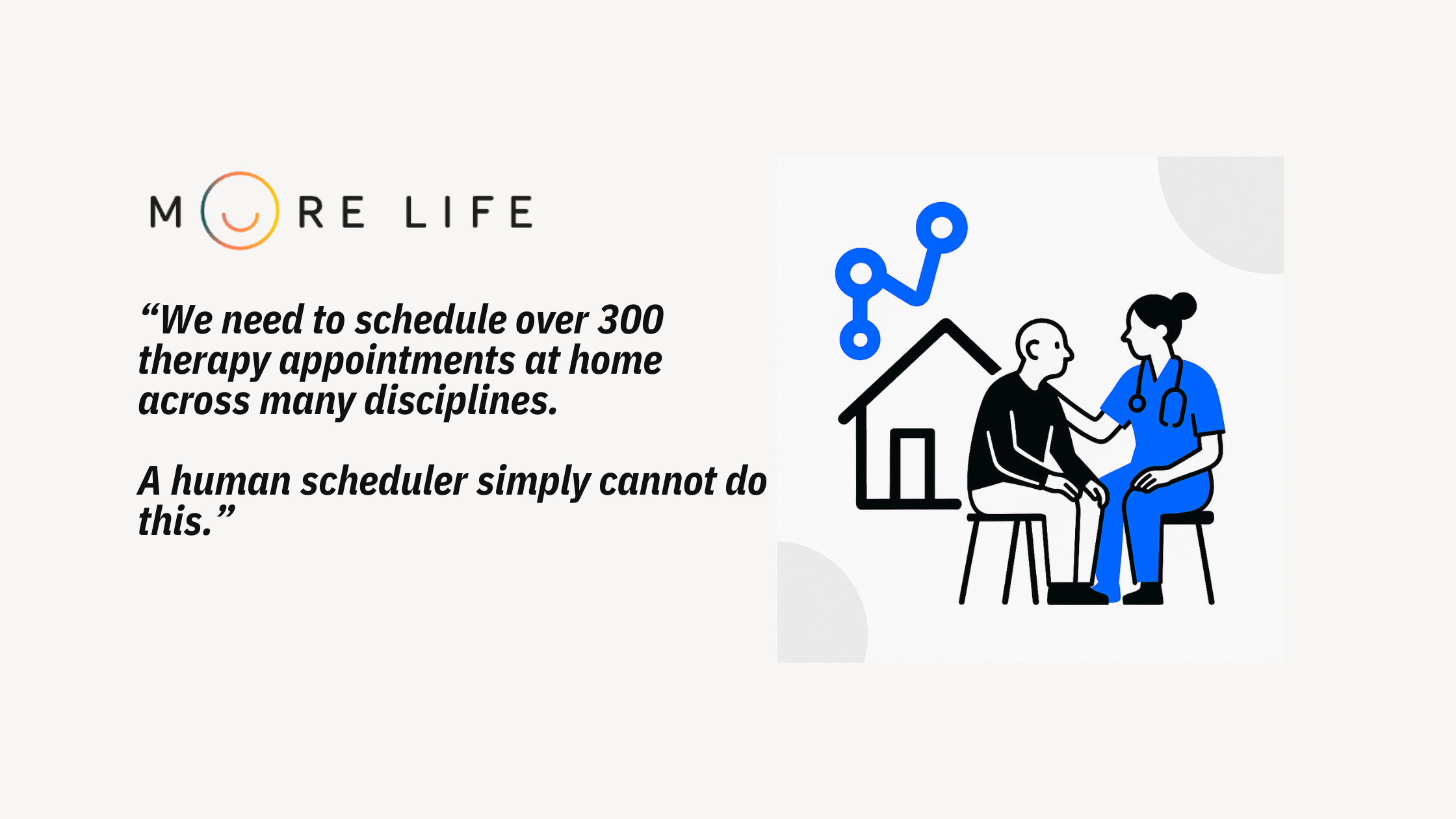
As businesses grow, their operational complexity increases and so do their scheduling needs. Whether you’re optimizing delivery routes, managing a workforce, or allocating resources, the efficiency of your schedule directly impacts your bottom line. The real challenge is not just adopting scheduling tools but evolving them to match the scale and complexity of your operations.
.png)
From Manual Planning to Automated Scheduling
The Solvice Optimization Maturity Model outlines three critical phases businesses typically go through as they move from manual scheduling to full automation. These phases are designed to guide software companies and businesses building custom scheduling solutions, and help them achieve new levels of efficiency and agility.
.png)
In the first phase of optimization maturity, businesses start with manual planning. This phase often begins with self-dispatch, where individuals get a list of jobs and determine when and how to do these themselves — whether choosing delivery routes or organizing their shifts. As businesses grow, they typically transition to digital scheduling tools to take control and aim for more optimal use of time and means.
Basic scheduling systems often involve spreadsheets, whiteboards, or basic software where decision-makers assign tasks based on immediate needs. It’s labor-intensive and lacks scalability, but it can be sufficient for small businesses with simple operations.
Planning boards represent a big improvement, allowing schedulers to assign tasks more easily and visualize resource allocation better. However, the system still requires manual input and constant oversight. Decision-makers can only handle last-minute changes, unexpected constraints, and conflicts with intelligent support.
Manual planning systems are require a lot of work and the quality of manual schedules remains far below AI generated solutions. As your business grows, these systems become a bottleneck, limiting your ability to scale and adapt to changing conditions.
The second phase in the optimization maturity ladder is assisted scheduling, where decision-making transitions from manual input to system-driven support. Businesses at this stage start using more advanced tools that manage scheduling and assist with suggestions and proposals, helping schedulers make better choices based on data.
Decision support systems (DSS) offer a significant leap forward by analyzing available data and offering suggestions to optimize scheduling. For example, a DSS might recommend the most efficient delivery routes or suggest optimal worker shifts based on multiple constraints and expected demand. The DSS takes a small piece of the puzzle and solves it. However, the final decision still rests with the human scheduler.
As businesses further advance, they integrate AI-based scheduling proposals. Here, optimization AI algorithms combine all constraints, resources, and jobs and map out all theoretically possible schedules to provide automated suggestions. These systems can propose the best routes, assign workers based on skills and availability, and adjust schedules based on live data like traffic or demand spikes.
While assisted scheduling greatly improves efficiency, it still requires human oversight. The scheduler reviews and approves or adjusts the system’s proposals as necessary. While more effective than manual planning, this phase isn’t fully autonomous and can’t entirely eliminate human bias or error.
Assisted scheduling offers predictive capabilities, but as your operations grow more complex, the need for real-time, fully autonomous scheduling becomes apparent. The next phase, automated scheduling, allows businesses to scale and optimize without needing constant human intervention.
Automated scheduling is the final and most advanced phase, where intelligent systems take full control of scheduling and optimization. In this phase, businesses can completely remove human oversight, relying on AI-powered agents to manage scheduling in real-time, adjusting dynamically to changing conditions.
At the beginning of this phase, businesses implement scheduling optimization systems that automatically assign resources, routes, and tasks based on predefined objectives like minimizing costs or maximizing efficiency. These systems use algorithms to balance variables such as travel time, worker availability, and task priority, delivering optimized schedules without manual input.
The ultimate goal of this phase is achieving autonomous, 'autopilot' scheduling, where the system becomes an intelligent agent capable of considering each context change and continuously optimizing operations. This fully automated system doesn’t just react to changes—it proactively anticipates issues, such as demand fluctuations or operational bottlenecks, and adjusts schedules accordingly. For example, an autonomous system could reroute deliveries in real-time based on traffic updates or adjust workforce deployment based on evolving customer needs.
Moving to full automation requires significant investment in technology, data integration, and process overhaul. However, the long-term benefits far outweigh the initial costs, allowing businesses to operate with greater agility, efficiency, and precision.
Automated scheduling offers the ultimate in scalability and efficiency. Companies at this level can focus on strategic initiatives, knowing that their day-to-day scheduling operations are being handled by intelligent systems that continuously learn and improve.
Moving up the optimization maturity ladder is not just about adopting better tools—it’s about transforming how your business operates. Companies stuck in manual planning are limited in their ability to grow, while those that embrace assisted and automated scheduling can unlock new levels of agility, efficiency, and scalability.
For CEOs, CTOs, and product managers, understanding where your company stands on this maturity model is key to making the right investments in technology. The higher you climb, the more streamlined your operations become, allowing you to focus on growth, innovation, and customer satisfaction.
The Solvice Optimization Maturity Model provides a clear roadmap for businesses looking to scale their scheduling operations. Moving from manual planning to assisted scheduling and, ultimately, to automated systems allows companies to unlock new levels of efficiency, adaptability, and cost savings.
The payoff is enormous for businesses that succeed in reaching the highest level of automation. Real-time, autonomous scheduling frees up resources, reduces operational bottlenecks, and ensures that day-to-day operations run seamlessly, enabling companies to focus on the bigger picture.



